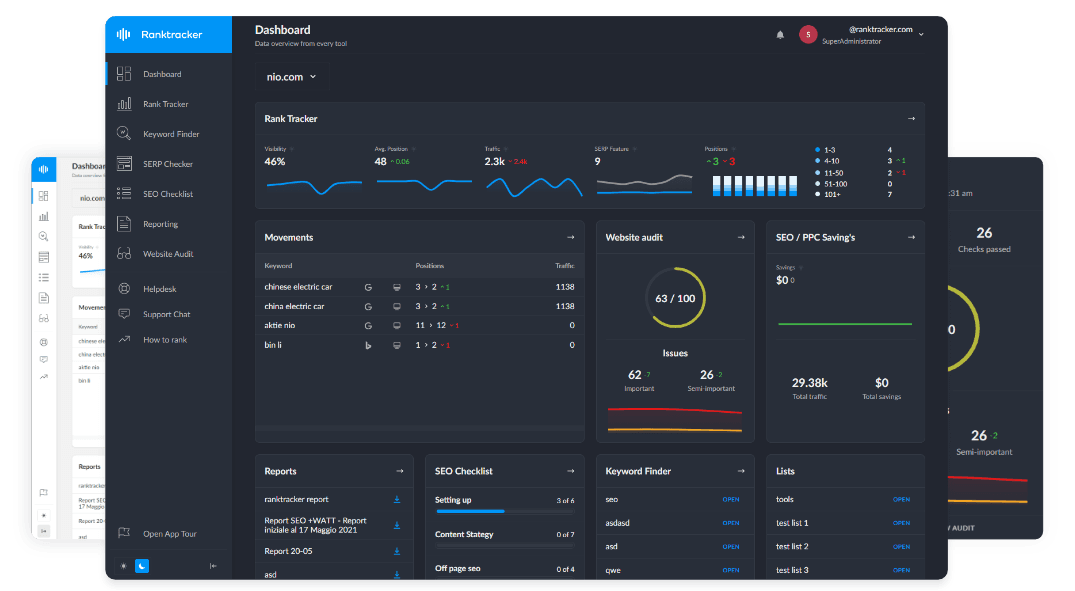Intro
In today’s search landscape, desktop and mobile rankings are not the same—and assuming they are can cost you traffic. Google delivers different search results depending on the device being used, and your rankings can vary significantly between desktop and mobile. This is why desktop vs mobile rank tracking is essential for any SEO strategy that wants to reflect how real users interact with your site.
Whether you're optimizing for a local business, managing an e-commerce store, or running a national SEO campaign, knowing your keyword positions on both platforms is the only way to get a complete picture of your visibility.
Why Rankings Differ Between Desktop and Mobile
Google uses mobile-first indexing, but that doesn’t mean mobile and desktop results are identical. Several factors influence differences between the two:
-
Layout and UI differences: Google often rearranges SERP features or truncates results differently on mobile.
-
Speed and mobile usability: A slow or poorly optimized mobile page can lose ranking positions even if the desktop version performs well.
-
Location signals: Mobile searchers tend to trigger more localized results, especially for “near me” and service-based keywords.
-
Search intent shifts: People search differently on mobile—shorter queries, more voice searches, and different timing and behavior.
The end result? A keyword ranking #3 on desktop might be buried at #8 or lower on mobile—and you won’t know unless you track both.
What Is Desktop vs Mobile Rank Tracking?
Desktop vs mobile rank tracking involves monitoring the position of the same keyword across both device types separately. Instead of averaging or merging rankings, a proper tool gives you two sets of data:
-
One for how your site ranks when searched from a desktop device
-
Another for how it ranks on mobile devices
This allows you to identify device-specific issues, optimize accordingly, and report on true user experience.
Why It Matters
1. Mobile Now Dominates Search
Over 60% of all Google searches come from mobile devices. If you’re only tracking desktop, you’re missing the majority of search activity.
2. SEO Visibility Isn’t Platform-Neutral
Your meta titles might be truncated differently, your site’s mobile performance might affect rankings, and mobile-only SERP features like app packs and carousels can push your result further down.
3. Conversion Rates Differ by Device
A page that ranks well on mobile but loads slowly or renders poorly could underperform—even if you’re “technically” visible. Knowing the ranking isn’t enough unless it reflects the actual device experience.
4. Competitive Gaps
Some competitors may dominate desktop results while being weak on mobile—or vice versa. Device-specific tracking exposes where you can overtake them quickly.
What to Look for in a Device-Aware Rank Tracker
A high-quality desktop and mobile rank tracking solution should provide:
-
Separate ranking data for mobile and desktop
-
Google SERP views rendered per device type
-
Local tracking by device (e.g., mobile rankings in NYC vs desktop in LA)
-
Tracking of device-specific SERP features (app packs, mobile carousels, etc.)
-
Historical trends segmented by device
-
Exportable, client-ready reporting for each platform
How Ranktracker Handles Desktop and Mobile Rank Tracking
Ranktracker provides dual-device visibility for every keyword you monitor. You can track rankings on mobile and desktop separately across:
-
Google (global or localized versions)
-
Bing (if required)
-
Countries, cities, or even ZIP codes
-
Both organic listings and SERP features (snippets, local packs, videos)
Each keyword shows a clear, side-by-side comparison of device-specific performance—so you can detect ranking drops, UX problems, or device-related cannibalization issues with precision.
Ranktracker also enables full reporting based on device segmentation, letting you measure SEO ROI for mobile-specific campaigns, AMP pages, or mobile-first design efforts.
Who Needs Desktop and Mobile Rank Tracking?
-
Agencies running performance-based SEO for clients
-
In-house SEO teams focused on mobile-first design
-
E-commerce businesses optimizing for mobile shopping behavior
-
Local businesses relying on mobile “near me” searches
-
Content teams building AMP or responsive templates
-
Technical SEOs auditing Core Web Vitals for mobile UX
Mobile-first indexing may be standard, but desktop results still matter, especially for B2B and office-based searches. Tracking both lets you adapt your strategy to where your audience is searching—and how.

